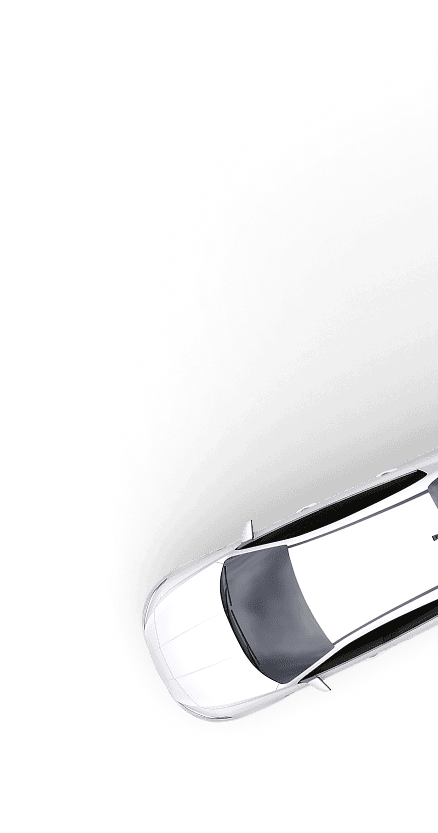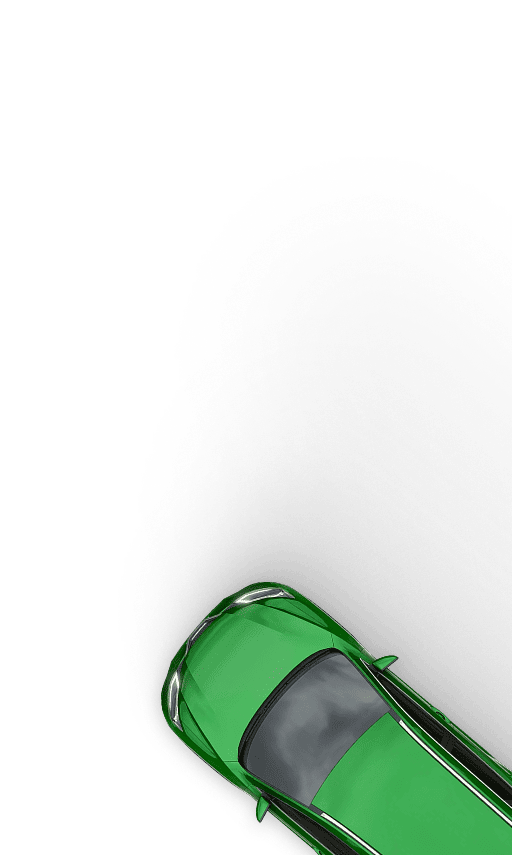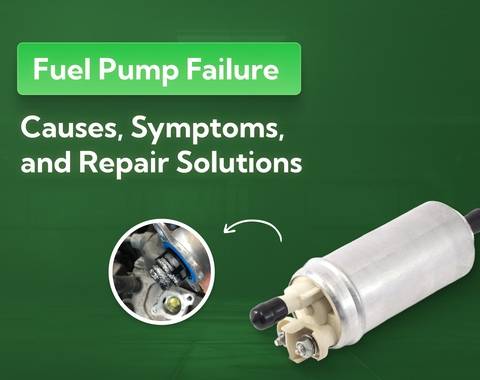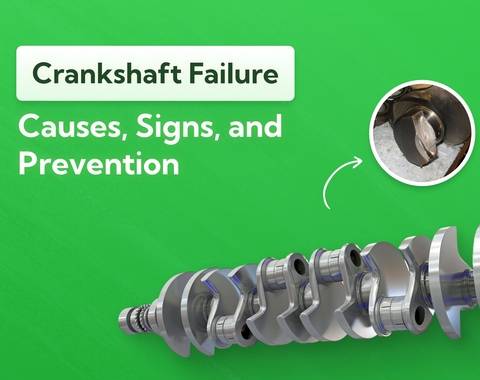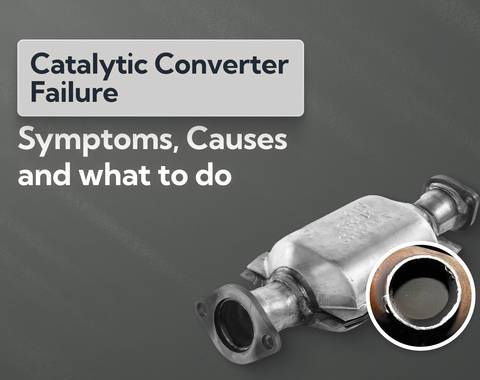How Much are Catalytic Converters Worth?
Wondering how much your catalytic converter is worth? Prices range from £20 to over £800 (and a few several times more). This guide explains what affects value, how to get an accurate quote and where to sell for the best price.
Last updated: 23rd October, 2025

Anthony Sharkey is COO at New Reg Limited (Car.co.uk, Trader.co.uk, Garage.co.uk), driving innovation in vehicle recycling, logistics, and customer experience.
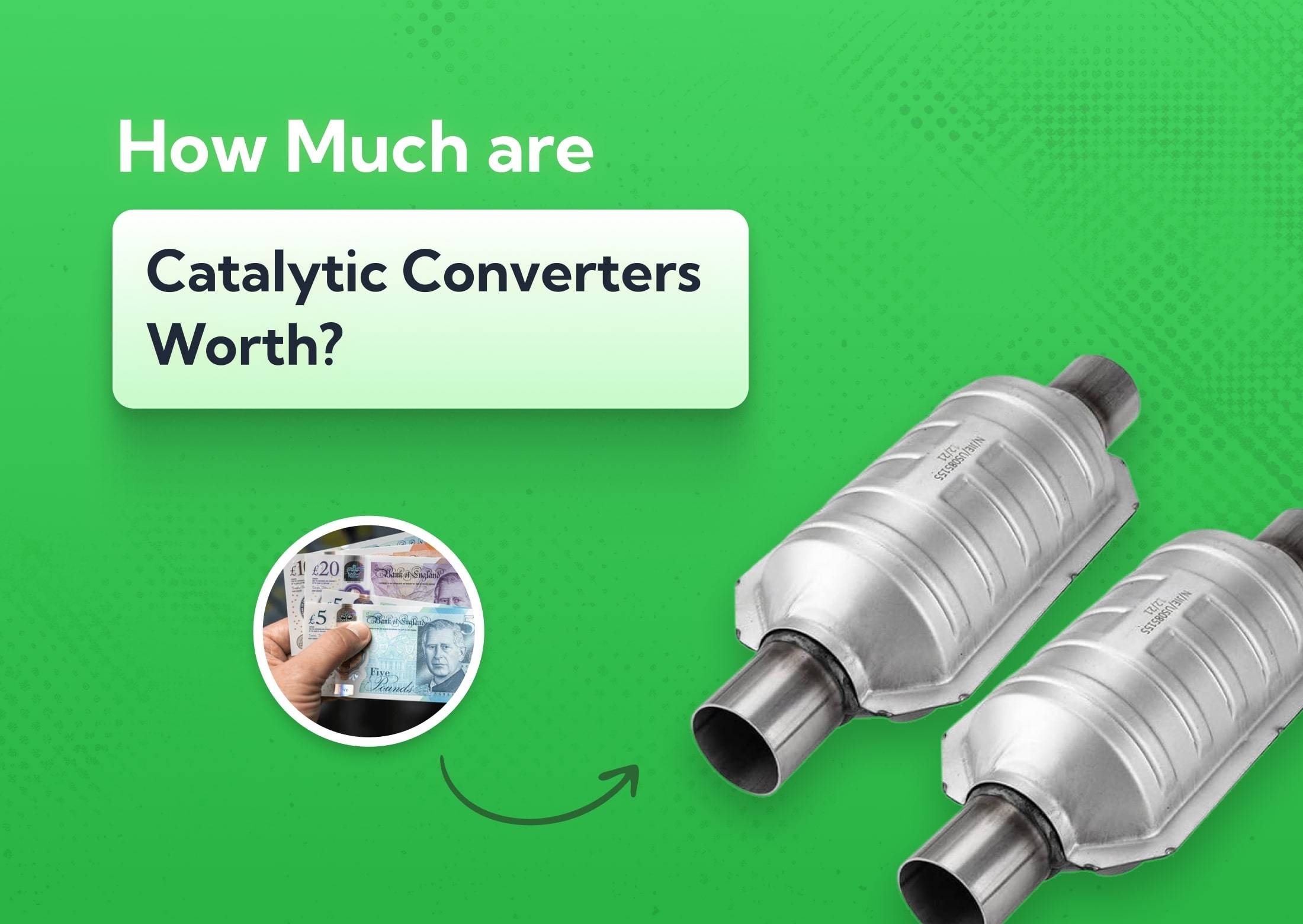
Listen to this story
In the UK, catalytic converters are usually worth anywhere from £20 to £800, though some of them fetch as much as £2,500 on the resale market.
That value comes from the precious metals inside (platinum, palladium and rhodium), which are used to filter harmful emissions. Prices are incredibly variable based on the make and model, metal prices and whether it’s new, used or scrapped.
Note: Prices quoted in this guide reflect UK market values as of October 2025. They’re subject to change based on precious metal market fluctuations.
Want to know what affects the value, how to check what yours is worth, and how to sell it safely? Keep reading.
What's in this article
- 1. What determines catalytic converter value?
- 2. Catalytic converter precious metal composition (UK, 2025)
What determines catalytic converter value?
The value of a catalytic converter depends almost entirely on the type and quantity of precious metals it contains, primarily platinum, palladium, and rhodium. These metals act as chemical catalysts that convert harmful exhaust gases into safer emissions. Since their market prices fluctuate and supply is limited, they drive most of the value.
Beyond metal content, several other factors matter too: the make and model of the car, the converter’s size and design and even whether it’s OEM or aftermarket. We’ll break those down next.
Precious metal content
The value of any catalytic converter comes down to its mix of platinum, palladium and rhodium.
- Platinum (£28.256 per gram) is the steady workhorse. It’s durable and heat-resistant, and it’s less volatile in price but still adds solid value. It has the highest concentration of diesel cars.
- Palladium (£30.763 per gram) dominates petrol converters thanks to its efficiency at cleaning exhaust gases. Prices have climbed in recent years, making palladium-heavy converters especially valuable.
- Rhodium (£169.949 per gram) is the real prize. It’s rare, used in tiny amounts and worth far more per gram than any other metal. Even small differences in rhodium content can double a converter’s value.
The mix varies by vehicle type: petrol cars lean on palladium, diesels rely on platinum, hybrids use more of everything and performance models typically contain the richest metal loads.
Catalytic converter precious metal composition (UK, 2025)
| Metal | Average content (g per converter) | UK trade value (£/g) | % of total metal mass | % of total converter value | Value contribution (approx £) |
|---|---|---|---|---|---|
| Platinum (Pt) | ~ 3 to 7 g | £28 | 36% | 26% | ~ £84 to £196 |
| Palladium (Pd) | ~ 2 to 7 g | £31 | 45% | 36% | ~ £62 to £217 |
| Rhodium (Rh) | ~ 0.5 to 2 g (often ≤1 g) | £170 | 9% | 38% | ~ £85 to £340 |
| Total | 10 g total PGM | - | 100% | 100% | ≈ £437 (gross metal value) |
Vehicle make and model
Some catalytic converters are worth more simply because of the car they came from.
- Japanese brands like Toyota, Honda and Mazda (older models in particular) tend to fetch high prices, particularly from hybrid models that contain more precious metals.
- European luxury cars like BMW, Mercedes and Audi also have valuable converters thanks to their stricter emissions systems and higher-grade materials.
- Even American brands like Ford, GM and Dodge carry strong resale value depending on engine size and age.
Ultimately, the brand matters because it influences the converter’s metal load, design, and scrap demand.
Vehicle age and year
Age matters, but not exactly how you’d think.
Older converters (pre-Euro and early Euro 1/2/3) were loaded with more precious metals like platinum and rhodium to compensate for less efficient engines and exhaust systems. But over time, most of these units degrade, crack or lose a portion of their recoverable metals.
As emissions standards advanced, converters became more efficient, particularly in the Euro 4 and Euro 5 eras (mid-2000s to early 2010s) when designs balanced high metal content with modern engineering.
But it’s a common misconception that newer converters use less precious metal. In reality, newer units (for the most part) actually carry higher concentrations of platinum, palladium and rhodium (PGMs) than older, less efficient designs.
The shift through Euro 4, 5 and especially Euro 6 standards pushed manufacturers to pack in more advanced catalysts to dramatically reduce NOx and cold-start emissions. Better coatings made PGMs work more efficiently, but they increased the overall amount required per converter.
So when it comes to scrap value, there’s no ‘sweet spot’ for age. Some early converters (pre-2006) still carry rich, unrefined metal loads. Some modern high-performance and hybrid vehicles (like large SUVs and certain Toyotas) hold the most valuable converters on the market.
What the experts say

Steven Jackson OBE
Condition and type
OEM catalytic converters contain far more platinum, palladium and rhodium than cheap aftermarket replacements. According to insights from RR Cats, that makes them 3-5x more valuable in some cases.
Damage (cracks, broken substrate, melted sections or loose fragments) also cuts value. Damaged parts lose recoverable metal (lost substrate pieces, contamination, washcoat loss) or become economically unviable to refine. We’ve seen cases where even a tiny fracture undermines the integrity of the honeycomb structure and reduces yield.
Then you have the substrate material to consider. Ceramic (cordierite-type) converters are common but fragile, while metallic (foil or metal) ones heat faster and resist shock, which is why they’re often used in performance models.
Because ceramics are more common, recyclers are well set up to process them. Metallic types sometimes earn a premium, but their value depends heavily on how well they survive service and how easily their metal content can be recovered.
And of course, complete, intact units always fetch more than broken or partial ones, since recyclers can identify, process, and recover their metal content far more efficiently. Condition, origin, and construction together decide what a converter is really worth
Converter size and configuration
As you’d imagine, larger converters from trucks, SUVs and high-displacement engines contain more catalyst substrate and therefore higher amounts of platinum, palladium and rhodium. Smaller engines use compact converters with less metal loading, which means lower returns.
Vehicles with dual or multi-stage systems (like pre-cats and underfloor cats) tend to hold more total precious metal than single converters, though not every stage is equally valuable. Some pre-cats, for example, use leaner loadings.
Size matters because more volume typically means more recoverable metal and a higher payout per unit. Larger converters also offset the fixed costs of processing and refining, which makes them more profitable to recycle.
That said, bigger doesn’t always equal better. Aftermarket and low-grade units could be physically large but contain minimal PGM or be relatively low compared to its OEM counterpart.
Catalytic converter scrap values by vehicle type
If you’re going to scrap your car, you’re probably wondering what kind of value you’ll get out of the catalytic converter. Truth is, you won’t get as much as you would resale because it’s an end-of-life vehicle. But there’s still serious value in it.
Below, we’ve compiled current catalytic converter scrap values, segmented by vehicle type.
Scrap value of catalytic converters by vehicle type
| Vehicle type | Typical UK scrap value range | Notes |
|---|---|---|
| Small petrol city cars | £40 to £150 | Smaller substrate, lighter PGM load. |
| Diesels (with catalytic + DPF) | £80 to £400+ | Diesel converters with particulate filters or SCR / NOx catalysts) tend to be larger and hold more PGM; higher value if intact |
| Family saloons and hatchbacks | £80 to £250 | Mid-size units with moderate PGM. |
| Performance and luxury | £150 to £1,200+ | Higher-spec OEM cats often test richer. |
| Hybrids e.g. Prius, Lexus CT/RX | £300 to £1,000+ | Converters run cleaner, retain PGM, often top-tier values. |
| SUVs and large engines | £150 to £500+ | Larger units, higher flow, more substrate. Hybrids and some Lexus SUVs sit at the upper end. |
| Light commercial vans | £60 to £200 | Common grades with conservative loadings. |
Keep in mind ranges combine our own UK recycling data and theft-risk data that mirrors market demand for pricier units. Exact payouts depend on OEM vs aftermarket, condition, completeness and live Pt, Pd and Rh prices.
What are the most valuable catalytic converters?
After decades in the motor trade, 130,000+ cars successfully scrapped through Car.co.uk and thousands of valuations and sales through our sister companies, we’ve seen just about every catalytic converter come across the scales.
The market shifts constantly with metal prices, but certain models consistently fetch higher offers year after year. This is what we’re seeing consistently year after year:
Most valuable catalytic converters (UK scrap ranges)
| Vehicle / class | Typical value range* | Why they command high value |
|---|---|---|
| Toyota Prius (hybrid models) | £300 to £800 | Hybrids run converters under gentler conditions (cooler exhaust, less contamination), preserving precious metals. Toyota’s hybrid cats carry richer PGM loadings, making them a top target for theft and scrap alike. |
| Honda Accord / CR-V | £100 to £300 | Popular midsize models, well-known OEM converters, and decent PGM loadings. Balanced demand in the used/recycling market. |
| BMW / Mercedes (luxury / performance variants) | £200 to £1,200 | High-spec, performance or higher-emission variants (e.g. AMG, M) use richer catalyst designs. Many models also have multi-stage setups or higher PGM density per unit. |
| Ford F-Series | £150 to £400+ | Heavy-duty exhaust systems; larger converters to handle big displacement and volume; more substrate and space for PGMs. |
| Exotics / supercars | £1,000 to £2,500+ | High-performance designs, bespoke catalytic systems, extreme PGM loading to meet tight emissions with performance constraints. These use premium metals, custom substrate geometry and richer catalyst zones. |
One thing worth mentioning: some converters are valuable not just for what’s inside, but for how easily they’re stolen.
For example, Honda CR-Vs don’t necessarily carry a higher concentration of platinum-group metals than similar SUVs, but their ground clearance of 19-20cm makes them easy targets. That pushes up demand and price within an already high-value segment (SUVs). And it’s part of the reason why 27% of the ones registered in the UK have an aftermarket converter.
How to get an accurate price for catalytic converters
Start by locating the serial number stamped on the catalytic converter. It helps buyers identify the exact part. Then take clear, detailed photos from multiple angles, including the unit's overall shape and any markings.
You should always get at least 3 to 5 quotes from different buyers or dealers. Use online valuation databases, check forums and research how converters from your specific car make and model typically perform.
Of course, don’t take the first offer you get. Compare all of them side by side and avoid anyone who’s vague or unwilling to explain their pricing.
At Car.co.uk, our proprietary algorithm pulls from real-world scrap data on over 130,000 vehicles, plus pricing and sales trends from our sister companies. When you get a free car valuation, we’ll also give you a video breakdown that includes your catalytic converter’s worth, along with all the other salvageable components of your vehicle.
What are the best places to sell your catalytic converter?
You’ve got a few solid options: scrap yards, car breakers, specialist buyers and online platforms. Each comes with its own pricing structure, but most legit buyers will offer anywhere from £50 to £400+, depending on the unit and how you decide to sell it.
What matters most is transparency and trust. Look for buyers who clearly explain how they assess value, are willing to show metal content reports and use recognised databases. If they dodge questions or give you a suspiciously low quote, move along.
I recommend weighing each selling method based on what matters to you more: convenience, payout speed, payout amount and reliability. One buyer might offer slightly less but include collection or same-day payment. Another might pay more but have extra hoops to jump through.
Local scrap yards and recycling centers
Local scrap yards are one of the easiest ways to sell your catalytic converter. You’ll usually get £20 to £200 for an average unit, or up to $400 in some cases. The benefit here is the process is fast. No shipping, no waiting and you can walk away with cash the same day.
But there’s a trade-off. Most yards don’t specialise in catalytic converters and won’t take the time to analyse the metal content. That means lower payouts and limited transparency.
When this option makes sense: If you’re scrapping the entire car, already working with the yard or care most about getting quick cash with no hassle.
Specialist catalytic converter buyers
If you’re aiming for maximum value, specialist catalytic converter buyers are often the best route. They pay between £50 and £600, depending on the exact unit.
Generally, they fall into one of four categories:
- Dedicated converter recycling companies (e.g. Recycleright, CCR, or Ecotrade Group).
- Mobile converter collectors who pick up converters from garages or private sellers
- Online converter buying platforms that let you upload photos and serial numbers to get a quote, then ship the unit via courier.
- Scrap networks with converter expertise (like Car.co.uk)
Because they’re motor traders, specialist buyers know how to assess metal content properly. And since they resell, they’ll offer fairer prices than pure scrap.
You might need to ship the unit and wait a day or two for payment (not with us — we pay you same-day), but you’re dealing with professionals who use real pricing data. Stick to buyers with strong reviews and clear policies, and you’ll avoid most risks.
When this option makes sense: When you’ve got a converter in good condition and want a realistic, high-value offer.
Online platforms and marketplaces
Selling through online platforms is sometimes a convenient way to get competitive offers. Prices vary greatly (anywhere from £30 to £500) depending on the platform, buyer and the converter itself, though.
The main draw here is reach and convenience. You can list your converter, compare offers, and potentially sell without leaving home.
But the downsides are the most significant. You’ll usually need to cover shipping and platforms like Gumtree and Facebook Marketplace lack proper verification. You’ll also get lowball offers and possibly deal with delayed payments. And there’s always the risk of pricing it inaccurately (either too high and it doesn’t sell or too low and you miss out on a couple hundred pounds).
When this option makes sense: If you’re comfortable handling the sale yourself and want to cast a wide net to find a good offer.
These are businesses that buy used parts, including catalytic converters, to refurbish or recycle. Prices tend to sit in the mid-range. Not as high as specialist buyers, but often better than your local scrap yard.
Because they’re established operations, they usually have multiple branches and trade partnerships, which makes drop-off or pickup easy. But they’re also middlemen. They resell to processors or exporters, so they take a cut. That reduces how much you’ll get.
When this option makes sense: If you’re already dealing with a parts buyer or motor factor, or if you’ve got multiple parts to sell at once and want to move them in one go.
Tips to maximize your catalytic converter’s value
If you play it smart, you can boost your payout by £100 to £500+ just by avoiding rookie mistakes and knowing how the process works. Most sellers don’t realise how much value gets lost through poor handling, rushed deals and a lack of research.
The key is to properly identify the unit, time your sale, keep the converter in good condition and research buyers before you commit to one. You’d be surprised how many people accept the first offer or damage the converter without realising.
In the sections below, I’ll detail exactly what to do and what to avoid if you want to walk away with top money.
Proper identification
Buyers can’t give you a fair price without knowing what they’re looking at, so proper ID is step one.
Gently clean the area around the serial number using a soft brush or cloth. Don’t use anything abrasive that could damage the stamp. Then take clear photos from multiple angles, including the full body of the converter and any visible markings.
Make sure you also note the make, model, and year of the vehicle it came from. The more complete and accurate your information, the easier it is for buyers to give you a proper quote and not just a lowball estimate.
Timing your sale
The value of a catalytic converter tracks closely with the market prices of platinum, palladium and rhodium. And those prices swing quite a bit from time to time.
If you’re not in a rush, it pays to keep an eye on the precious metals market and aim to sell when prices are strong. Sites that track metal pricing and scrap indexes will help you spot a good window. You might even be able to sign up for email updates.
But you could be waiting for quite some time. There’s no real seasonal trend; economic shifts, industrial demand and geopolitical factors are what drive PGM prices.
Either way, don’t panic-sell just because you got a fast quote. A bit of patience can mean £100s more in your pocket.
Preserving its condition
Sellers who get the best price keep their catalytic converter intact and undamaged. Even missing mounting brackets or heat shields lower the price, particularly with specialist buyers.
Avoid cutting through the unit or bashing it to remove it faster. Use proper tools and unbolt it cleanly if possible. And never remove the internal honeycomb material because that’s where all the value is.
If you're not selling it right away, store it somewhere dry and safe. Moisture and damage from rough handling degrade the metals inside over time and make it harder to verify its origin.
Research before selling
Before you get quotes, take time to understand what you’ve got. Is your converter OEM or aftermarket? From a hybrid or petrol car? Like I’ve explained above, these details massively affect the value.
Look up the typical price range for your exact converter type, check recent sales or scrap prices and use our free valuation tool to get a baseline estimate of what you should expect. The more you know, the less likely you are to get lowballed.
When you know what your converter is worth, negotiations start to work in your favour. Instead of taking whatever’s offered, you can ask the right questions, spot undervalued quotes and back up your price expectations with real data.
Common mistakes to avoid
The biggest mistake I see most drivers make is they accept the first offer without question. Lowballing is common, especially if the buyer thinks you’re unaware of the value. And most sellers are unaware of the value. Always check multiple offers before deciding.
Another is selling without proper identification. If you have no serial number, photos or vehicle details, that instantly kills your leverage. So does damaging the converter during removal or stripping parts off it, which will make it worth significantly less.
And of course, don’t ignore the market. Selling when metal prices are low can cost you hundreds. A little patience and prep go a long way.
Get a quote for your car
Getting an accurate quote for your catalytic converter starts with good info. Make sure you provide the serial number, clear photos and details about the car it came from. Make, model, year and fuel type all help buyers zero in on a realistic price.
Once you’ve got that, compare quotes from at least three different sources. Some will give a flat price, others will break it down based on metal content or condition. Be wary of vague or overly optimistic offers. If one is way off from the rest, there’s probably a catch.
For 100% transparency, Car.co.uk’s free car valuation includes a breakdown of your catalytic converter’s worth based on our sales history and real-time pricing data. You’ll get a video report and a full picture of your car’s value, including the cat, so you can sell with confidence.
About Car.co.uk

Share on
Latest news & blogs


